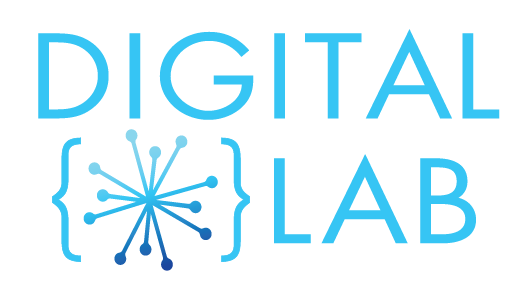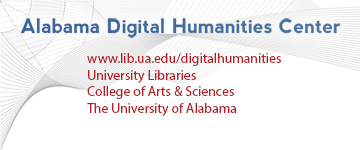What is Syriac?
Syriac is a language which once flourished on the Mesopotamian plateau. A dialect
of Aramaic, Syriac was widely used during much of the first millenium of the common
era. Syriac speaking communities could be found in what today would be Turkey,
Lebanon, Syria, Iraq, Iran, India, Central Asia, China, and Mongolia. Sources in
Syriac hold immense value for increasing our historical understanding of the
Mediterranean, the Middle East and Asia. In particular, Syriac sources document key
moments in the development and interaction of Judaism, Christianity, Islam, and
other religions of Late Antiquity. Learn more…
What is Syriaca.org?
Syriaca.org: The Syriac Reference Portal is a digital project for the study of Syriac literature, culture, and history. Today,
a number of heritage communities around the world have linguistic, religious or cultural
identities with roots in Syriac language and culture. Syriaca.org exists to document
and preserve these Syriac cultural heritages. The online tools published by Syriaca.org
are intended for use by a wide audience including researchers and students, members
of Syriac heritage communities and the interested general public. In order to meet
the diverse needs of users, the design of Syriaca.org is inherently collaborative
and fluid.
The primary function of Syriaca.org is to be a reference hub for digitally linking
research findings. Syriaca.org's publications compile and classify core data for the
study of Syriac sources, offer the scholarly community digital tools for freely disseminating
that data, and facilitate further research through the creation of shared digital
tools and infrastructure. Learn more…
How to Cite?
Notes: David A. Michelson, general editor; Daniel L. Schwartz, director; Jeanne-Nicole Mellon
Saint-Laurent, associate director; Nathan Gibson, William L. Potter, and James E. Walters, editors;
Erin Geier and Winona Salesky, senior programmers, Syriaca.org: The Syriac Reference Portal
(2014-), http://syriaca.org
Bibliography: Michelson, David A., general editor; Daniel L. Schwartz, director; Jeanne-Nicole Mellon
Saint-Laurent, associate director; Nathan Gibson, William L. Potter, and James E. Walters, editors;
Erin Geier and Winona Salesky, senior programmers. Syriaca.org: The Syriac Reference Portal.
2014-. http://syriaca.org
Online Resources
The publications of Syriaca.org combine emerging methods in the field of digital
humanities with the rigour of traditional scholarship in history and
philology. Several digital reference works are currently in preparation:
Published:
-
The Syriac Gazetteer
(eds. Thomas Carlson and David Michelson) is
a dictionary of historical geography concerning places related to Syriac
studies. It was published in 2014 and contains nearly 2,500 place records. This
is the only scholarly resource of its kind to offer place names in Syriac.
Forthcoming:
-
The Syriac Biographical Dictionary
(SBD, eds. David Michelson, Nathan Gibson, Thomas Carlson, and Jeanne-Nicole Mellon
Saint-Laurent) is a reference work and
authority file which aims to create URIs
for all persons of interest as linked data for Syriac studies. While the SBD is not itself a prosopography in the tradition sense, in combination with its sibling
publication, SPEAR: Syriac Persons Events and Relations, it forms the core of Syriaca.org's prosopographical database. When complete SBD will have three volumes: Qadishe: A Guide to the Syriac Saints (Vol. 1), A Guide to Syriac Authors (Vol. 2), and Miscellaneous Syriac Persons (Vol. 3). More information on the first two volumes is given below.
-
Volume 1: Qadishe: A Guide to the Syriac Saints
(edited by Jeanne-Nicole Mellon Saint-Laurent and David Michelson) is the most extensive
reference work ever published on saints in the Syriac religious traditions. Qadishe contains information on nearly 650 persons relevant to the study of Syriac hagiography
including the saints themselves (such as St. Simeon the Stylite) as well as their
associates and the authors who narrated their lives or wrote homilies and hymns about
them.
-
Volume 2: A Guide to Syriac Authors
(edited by David Michelson, Thomas Carlson, and Nathan Gibson) is the most extensive
reference work ever published on authors in the Syriac traditions. Forthcoming in
2016, this resource has also been serialized as part of
The Virtual International Authority File
. It contains entries on over 1000 authors.
-
A New Handbook of Syriac Literature (eds. Nathan Gibson, David Michelson, and Jeanne-Nicole Mellon Saint-Laurent) is
a
multi-volume reference guide to Syriac literature. This work aims to be the most extensive
reference work ever published on Syriac literature from antiquity to the early modern
period. The first volume, Bibliotheca Hagiographica Syriaca Electronica is nearing publication as a new guide to the lives of the Syriac saints. Further
information is below.
-
Volume 1: Bibliotheca Hagiographica Syriaca Electronica
(eds. Jeanne-Nicole Saint-Laurent, David A. Michelson, Ugo Zanetti, and Claude Detienne).
This work describes hagiographic texts written about saints and includes information
about different
versions and data such as the title, prologue, and epilogue of the saint's life,
along with the hagiographer. With publication scheduled for 2016. The draft of
this work contains entries on over 1800 texts about Syriac saints.
-
Gateway to the Syriac Saints
(eds. Jeanne-Nicole Mellon Saint-Laurent and David A. Michelson) is a reference site
specifically for the study of Syriac saints. It uses linked open data to combine Qadishe: A Guide to the Syriac Saints and Bibliotheca Hagiographica Syriaca Electronica as a single search site.
-
SPEAR: Syriac Persons Events and Relations
(ed. Daniel Schwartz) is a
factoid-based prosopographical tool similar to the
The Prosopography of Anglo-Saxon England (PASE)
. SPEAR is designed to provide information about persons and their
relationships within the context of historical events. This online prosopography
will be the first ever created with a specific focus on Syriac texts.
SPEAR will contain new data about people in Syriac texts (their name
or names, dates, important events, possessions they bought, sold, or owned,
ethnic identity, language, education, people to whom they wrote letters,
religion, vocation, etc.).
-
Digital Catalogue of Syriac Manuscripts in the British Library
(ed. David
Michelson) is a digital catalogue of Syriac manuscripts using the TEI XML standards for manuscript
cataloguing.
-
A Union Catalogue of Syriac Manuscripts (ed. David Michelson) is digital
catalogue of Syriac manuscripts following the model of the
Fihrist
union catalogue.
All publications of Syriaca.org are made available online in a free and open
format using the Creative Commons licenses.
Draft data for in-process publications is available in a public Github repository.
In later development, we will open these resources up for collaborative augmentation
and annotation by scholars around the globe. Learn
more…
 Fondazione Internazionale
Balzan
Fondazione Internazionale
Balzan 









